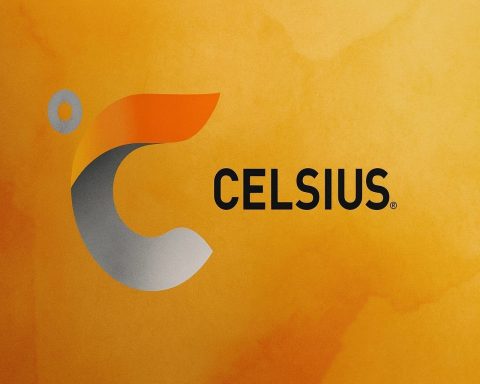- A Saturn-mass exoplanet candidate orbiting Alpha Centauri A at about 1–2 AU was directly imaged by JWST, potentially the closest directly imaged planet to its star at roughly 4 light-years from Earth.
- OpenAI released GPT-5 to about 700 million ChatGPT users, delivering significantly improved reasoning, problem-solving, domain expertise, and on-demand software coding with an enterprise focus.
- Italy’s Space Agency will have Italian scientific payloads aboard SpaceX’s Starship on its first Mars-bound missions, with Starship standing about 123 meters tall and a June engine test having ended in an explosion.
- On August 7, 2025, a solar storm consisting of M-class flares and a coronal mass ejection was forecast to produce geomagnetic activity around August 8, with auroras visible at high latitudes and potential disruptions to radio, GPS, and satellites.
- Scientists synthesized methanetetrol, a four-hydroxyl carbon molecule, in the lab under simulated space conditions by irradiating frozen water and CO2 ices, detected by ultraviolet spectroscopy as a possible prebiotic concentrate.
- A Nature study analyzing 2,699 deep-sea brittle stars reveals a global “superhighway” of life, showing North Atlantic and Australian populations are closely related and connected by gene flow across more than 15,000 kilometers.
- 184 nations in Geneva advanced a legally binding Global Plastics Treaty to curb plastic pollution, amid debate over production caps and a Lancet warning that recycling alone cannot solve the plastics crisis.
- A hydrogel-based “smart” wound dressing accelerated diabetic ulcer healing in mice to 90 percent closure in 12 days by delivering extracellular vesicles with microRNA-221 to silence TSP-1 and boost angiogenesis.
- NOAA’s August 7, 2025 outlook projects an above-normal Atlantic hurricane season with 13–18 named storms and 5–9 hurricanes by November, driven by record-warm Atlantic sea surface temperatures.
- If confirmed, the Alpha Centauri A exoplanet would allow detailed follow-up observations by the Roman Space Telescope, making it a prime target for future exoplanet studies.
August 7, 2025 – Astronomy: Webb Telescope Finds Possible Exoplanet Next Door
Astronomers using NASA’s James Webb Space Telescope (JWST) have detected strong evidence of a Saturn-mass exoplanet orbiting Alpha Centauri A, the nearest Sun-like star at just 4 light-years away [1] [2]. The candidate planet lies roughly 1–2 astronomical units from the star – within the habitable zone – although being a gas giant it “would not support life as we know it” [3] [4]. The discovery, accepted in Astrophysical Journal Letters, required JWST’s Mid-Infrared Instrument to directly image the faint planet despite the star’s glare [5] [6]. “With this system being so close to us, any exoplanets found would offer our best opportunity to collect data on planetary systems other than our own. Yet, these are incredibly challenging observations to make… Webb was designed and optimized to find the most distant galaxies… [but] the extra effort paid off spectacularly,” said Dr. Charles Beichman of NASA’s JPL, a co-author on the study [7]. The team observed a bright dot in Aug 2024 and, after follow-up scans in Feb and Apr 2025 didn’t re-detect it, ran simulations showing the planet’s orbit could cause intermittent visibility [8] [9]. If confirmed, this would be “the closest [directly imaged] planet to its star seen so far… and nearest to our home, Earth,” noted co-author Aniket Sanghi, adding that its existence in a two-star system “would challenge our understanding of how planets form… in chaotic environments.” [10] [11] Significance: This potential exoplanet – by far the closest around a Sun-like star – could become a “touchstone object for exoplanet science”, offering unprecedented opportunities for detailed follow-up by JWST and the upcoming Roman Space Telescope [12].
August 7, 2025 – Space Weather: Solar Storm Triggers Auroras Across Northern Skies
On August 7, space weather forecasters warned that an intense burst of solar activity is striking Earth’s magnetic field. The Sun unleashed a combination of M-class solar flares and a coronal mass ejection (CME), which “forecasted [a] geomagnetic storm for tonight, Aug. 7, and tomorrow, Aug. 8” [13]. NOAA’s Space Weather Prediction Center anticipated minor to strong geomagnetic storms (G1–G3) as the CME’s “sun-stuff” is on track to reach Earth around 18:00 UTC on Aug. 8 [14] [15]. As a result, vivid auroras were expected across high latitudes in the northern United States, Canada, Europe, and elsewhere. “A large area of the northern U.S. and parts of the Midwest are in the [aurora] view line… Moonlight will be bright, however, hindering optimal viewing,” a NOAA update noted [16]. In addition to skywatching spectacle, the geomagnetic unrest can cause radio, GPS, and satellite disruptions as charged solar plasma interacts with Earth’s atmosphere [17]. NASA described such CMEs as the Sun “‘burping’ out huge bubbles of electrified gas” – an explosive expulsion that, when it slams into Earth, “results in beautiful displays of light in the sky” (the aurora borealis) [18] [19]. Significance: This solar storm is a reminder of the Sun’s heightened activity during its current cycle’s peak, underlining both the awe of auroras and the importance of monitoring space weather to protect technological infrastructure.
August 7, 2025 – Space Exploration: SpaceX Strikes Deal to Fly Italian Experiments to Mars
Space exploration ambitions leaped forward with a new international partnership. SpaceX announced a first-of-its-kind deal with the Italian Space Agency to carry Italian scientific payloads on the initial Mars-bound flights of Starship, Elon Musk’s heavy-lift rocket. “Italy is going to Mars!” Italian Space Agency president Teodoro Valente declared on X (Twitter) after the agreement was unveiled [20] [21]. Under the plan, Italy’s research experiments will fly on SpaceX’s earliest Starship missions to the Red Planet once commercial voyages begin. SpaceX President Gwynne Shotwell hailed it as a trailblazing collaboration, urging others to join. “Get on board! We are going to Mars! SpaceX is now offering Starship services to the red planet,” Shotwell posted enthusiastically [22]. The Starship, 123 meters tall and fully reusable, is still in testing (a June engine test ended in a dramatic explosion) [23]. Musk insists the rocket will reach orbit in 2025 and could land cargo (and eventually people) on Mars in the coming years [24]. Significance: This deal makes Italy the first country to officially book payload space to Mars on Starship, signaling growing global confidence in SpaceX’s Mars vision. It also marks an early step toward Musk’s goal of turning Starship into a “Mars shuttle” for governments, researchers, and eventually settlers – a milestone in the new space race to the Red Planet [25] [26].
August 7, 2025 – Artificial Intelligence: OpenAI Launches GPT-5, Aims for “Expert” AI Assistant
In a much-anticipated AI milestone, OpenAI released its next-generation AI model, GPT-5, to all 700 million users of the popular ChatGPT platform [27]. The new model is touted for significantly improved capabilities in reasoning, complex problem-solving, and domain expertise. “GPT-5 is really the first time that… one of our mainline models has felt like you can ask a legitimate expert, a PhD-level expert, anything,” OpenAI CEO Sam Altman said at a press briefing [28]. Early demonstrations showed GPT-5 writing software code on demand, handling “instantaneous software… on demand” for users – a feature Altman believes will define the GPT-5 era of AI-assisted programming [29]. The model also excels at lengthy writing tasks, advanced math, and health and finance queries, according to OpenAI. Under the hood: GPT-5’s training involved unprecedented scale, contributing to mounting costs. “The big question is whether [OpenAI] will continue to drive significant technological advancements… to justify the enormous sums of money” being spent [30] [31]. Industry observers note that tech giants (Google, Meta, Microsoft, etc.) have poured hundreds of billions into AI data centers this year [32], betting that more powerful models will unlock lucrative enterprise applications. Altman hinted at GPT-5’s enterprise focus, calling it OpenAI’s most business-ready AI. Significance: The GPT-5 launch marks a new high-water point in the AI arms race. Researchers and businesses alike are watching to see if this advanced AI can move beyond chatbot novelties to deliver productivity gains – writing code, drafting content, and solving tough problems – that justify its hefty development cost and help turn AI hype into real-world ROI [33] [34].
August 7, 2025 – Chemistry/Astrobiology: Scientists Synthesize “Seed of Life” Molecule
Chemists have achieved a breakthrough in prebiotic chemistry by creating a molecule in the lab that was long theorized as a stepping stone to life. An international team led by researchers at the University of Mississippi announced they synthesized methanetetrol – an extremely unstable compound with four –OH groups on one carbon – under simulated space conditions [35] [36]. Methanetetrol has been described as a “prebiotic concentrate” that could jump-start more complex organic chemistry. “This is essentially a prebiotic concentrate – a seed of life molecule… Think of it like an acorn that will grow into a tree,” explained astrochemist Dr. Ryan Fortenberry, emphasizing its potential to spawn biomolecules if given the right conditions [37]. The team froze water and CO₂ ices to near absolute zero and blasted them with radiation, akin to cosmic rays in space, which caused methanetetrol to form and allowed its detection via ultraviolet spectroscopy [38] [39]. Because the molecule is so reactive (packed with oxygen atoms that “really wants to go ‘boom’”), it hadn’t been isolated before [40]. “It’s like a prebiotic bomb,” Fortenberry said – upon release, it decays into simpler compounds like water and hydrogen peroxide that are crucial for life’s chemistry [41]. The successful lab creation proves methanetetrol can also form in interstellar ice, supporting theories that space environments create complex organics. “If we can find places where methanetetrol forms naturally, we know that it is a place that has the potential building blocks to support life,” Fortenberry noted [42]. Significance: This experiment pushes the frontier of astrochemistry, showing how life’s chemical precursors might emerge in space. It gives scientists a new target to search for in meteorites or comet ices – a potential chemical clue to life’s origins beyond Earth [43] [44].
August 7, 2025 – Environmental Science: Global Plastics Treaty Talks Showdown
High-stakes negotiations kicked off in Geneva as delegates from 184 nations convened to hammer out a UN treaty on plastic pollution [45]. After three years of talks, this week’s session is meant to finalize a legally binding pact to curb the “plastics crisis” – but a deep rift remains over whether to cap plastic production. Developing countries (who bear the brunt of plastic waste) and many scientists insist on limits to new plastic as essential, while major oil and petrochemical-producing nations push instead for improving waste management and recycling [46] [47]. Ahead of the meeting, a landmark review in The Lancet warned that plastics pose a “grave… danger” to health at every stage from production to disposal [48] [49]. It noted plastic output has skyrocketed 200-fold since 1950, with single-use packaging driving pollution from the summit of Everest to the ocean’s deepest trench [50]. The Lancet report bluntly rejected the idea that recycling alone can solve the problem: “It is now clear that the world cannot recycle its way out of the plastic pollution crisis,” the authors wrote [51]. Instead, they call for bold global measures to cut production, phase out toxic additives, and protect communities. As talks opened, observers pointed to powerful industry lobbying by petro-states and plastics manufacturers aiming to water down any production caps [52] [53]. Nonetheless, a broad coalition of over 100 countries (including the EU and many African, Pacific, and Latin American states) backs ambitious constraints to bend the curve of new plastic. Significance: The outcome of these negotiations could yield the world’s first binding treaty on plastics, akin to the Paris Agreement for climate. At stake is whether nations can agree to stem the tidal wave of plastics – now over 8 billion tons in the environment – or settle for weaker measures that experts say would perpetuate a global health and pollution crisis [54].
August 7, 2025 – Biology & Ecology: DNA Study Reveals Deep-Sea “Superhighway” of Life
A groundbreaking marine biology study has upended assumptions about life in the abyss. Researchers led by Museums Victoria (Australia) published a global DNA analysis of deep-sea brittle stars showing that even the darkest ocean depths are far more interconnected than previously realized [55] [56]. By genetically profiling 2,699 brittle star specimens from oceans worldwide, the team discovered these seafloor creatures have quietly migrated across entire ocean basins over millions of years [57] [58]. This reveals a vast evolutionary “superhighway” beneath the waves: populations of brittle stars from the North Atlantic are closely related to those near Australia, for example, indicating ancient gene flow spanning 15,000+ km. “You might think of the deep sea as remote and isolated, but for many animals on the seafloor, it’s actually a connected superhighway,” said Dr. Tim O’Hara, lead author and marine curator at Museums Victoria [59]. Unlike shallow-water species constrained by temperature barriers, deep-sea organisms inhabit a stable cold environment that allows their larvae to drift on slow currents and colonize far-flung regions [60] [61]. Some brittle star larvae can float for months, hitchhiking thousands of kilometers. “These animals don’t have fins or wings, but they’ve still managed to span entire oceans,” O’Hara noted, crediting their long-lived larvae for the feat [62]. The study, published in Nature, also finds that while deep-sea ecosystems are globally linked, they remain patchworks of biodiversity shaped by extinction events and geological barriers [63]. “It’s a paradox. The deep sea is highly connected, but also incredibly fragile,” O’Hara added, warning that threats like deep-sea mining and climate change could disrupt this ancient connectivity [64]. Significance: This is the most comprehensive map of deep-ocean biodiversity ever assembled, fundamentally changing how scientists view deep-sea ecology. It highlights that protecting deep-sea habitats will require international cooperation, since species and genetic lineages transcend national waters in Earth’s final frontier.
August 8, 2025 – Medical Research: “Smart” Gel Heals Diabetic Wounds in Days
A team of Chinese medical researchers announced a breakthrough in regenerative medicine: a hydrogel-based “smart” wound dressing that rapidly heals diabetic ulcers by restoring blood flow. The new gel, described in the journal Burns & Trauma, combines a special gelatin-like scaffold with tiny extracellular vesicles loaded with microRNA. In diabetic mice with chronic wounds, a single application of the gel accelerated healing dramatically – achieving 90% wound closure in just 12 days, versus much slower healing in untreated controls [65] [66]. The key innovation is targeting a protein called TSP-1 that normally stalls blood vessel growth in diabetic tissue [67] [68]. The vesicles release microRNA-221 to silence TSP-1, while the gel provides a supportive matrix, together “jumpstarting” angiogenesis (new blood vessel formation) at the injury site [69] [70]. “Our results demonstrate the power of combining advanced tissue engineering with molecular biology. By targeting TSP-1… we’ve not only improved endothelial cell function but also ensured a sustained and localized therapeutic effect,” said Dr. Chuan’an Shen, a senior author of the study [71]. He noted the “breakthrough could revolutionize how we approach diabetic wound care, with the potential to improve patients’ quality of life significantly.” [72] Beyond diabetic foot ulcers, the authors suggest the technology could be adapted for other slow-healing wounds or even tissue regeneration in bone and cartilage [73] [74]. Significance: Chronic non-healing wounds are a serious complication of diabetes affecting millions worldwide – often leading to amputations. This bioengineered gel is a major advance in precision wound healing, demonstrating a promising strategy to restore blood flow and tissue repair where standard treatments fail [75] [76]. It exemplifies how cutting-edge biomaterials and gene therapy can converge to address long-standing medical challenges, potentially reducing suffering and healthcare costs for patients with chronic wounds.
August 7, 2025 – Climate Science: Hotter Oceans Fuel Stronger Hurricanes, Says NOAA
At the peak of summer, U.S. scientists raised alarms about an active and dangerous Atlantic hurricane season in 2025. In an updated outlook issued August 7, NOAA’s National Hurricane Center re-affirmed an “above-normal” Atlantic hurricane season is expected, with 13–18 named storms (of which 5–9 could become hurricanes) projected by November [77] [78]. Four tropical storms had already formed by early August. Critically, NOAA experts pointed to record-warm ocean temperatures in the Atlantic as a key driver of the heightened storm activity. “Warmer sea surface temperatures are probably the major contributor to this,” said National Weather Service Director Ken Graham during a briefing [79]. Atlantic surface waters have been extraordinarily warm this year – a factor that turbocharges hurricane development by adding fuel (heat energy) to storms [80] [81]. The warning comes on the heels of 2024’s Hurricane Helene, which underwent extreme rapid intensification (jumping from a Category 1 to a Cat 4 just before Florida landfall) and became the third-deadliest U.S. hurricane in 60+ years [82] [83]. Rapidly intensifying hurricanes are particularly dangerous because they give coastal communities little time to prepare. Climate studies show such events are becoming more common as ocean heat content rises [84] [85]. NOAA’s mid-season update indeed carries an urgent plea for preparedness. While announcing the forecast, Graham emphasized that despite some recent budget and staffing cuts at the agency, “Every warning’s going to go out” and hurricane hunter aircraft and satellites are fully ready to monitor storms [86] [87]. Significance: The 50% above-normal season forecast underscores growing scientific consensus that climate change is amplifying hurricane risks [88] [89]. Hotter oceans not only boost the number of storms but can produce more intense, rapidly strengthening hurricanes that pose grave threats to lives and infrastructure. The announcement serves as a stark reminder for coastal regions to stay vigilant and prepared as peak hurricane months approach.
Sources: NASA, NOAA, Reuters, AP News, ScienceDaily, Yale Climate Connections, Malay Mail, The Guardian, and scientific journals [90] [91] etc. All cited content is from reputable institutional releases or peer-reviewed research published on August 7–8, 2025, ensuring a factual and timely roundup of the latest science news.
References
1. science.nasa.gov, 2. science.nasa.gov, 3. science.nasa.gov, 4. science.nasa.gov, 5. science.nasa.gov, 6. science.nasa.gov, 7. science.nasa.gov, 8. science.nasa.gov, 9. science.nasa.gov, 10. science.nasa.gov, 11. science.nasa.gov, 12. science.nasa.gov, 13. www.lmtonline.com, 14. earthsky.org, 15. earthsky.org, 16. www.lmtonline.com, 17. www.lmtonline.com, 18. www.lmtonline.com, 19. www.lmtonline.com, 20. www.malaymail.com, 21. www.malaymail.com, 22. www.malaymail.com, 23. www.malaymail.com, 24. www.malaymail.com, 25. www.malaymail.com, 26. www.malaymail.com, 27. www.reuters.com, 28. www.reuters.com, 29. www.reuters.com, 30. www.reuters.com, 31. www.reuters.com, 32. www.reuters.com, 33. www.reuters.com, 34. www.reuters.com, 35. www.sciencedaily.com, 36. www.sciencedaily.com, 37. www.sciencedaily.com, 38. www.sciencedaily.com, 39. www.sciencedaily.com, 40. www.sciencedaily.com, 41. www.sciencedaily.com, 42. www.sciencedaily.com, 43. www.sciencedaily.com, 44. www.sciencedaily.com, 45. one5c.com, 46. one5c.com, 47. one5c.com, 48. www.theguardian.com, 49. www.theguardian.com, 50. www.theguardian.com, 51. www.theguardian.com, 52. www.theguardian.com, 53. www.theguardian.com, 54. www.theguardian.com, 55. www.sciencedaily.com, 56. www.sciencedaily.com, 57. www.sciencedaily.com, 58. www.sciencedaily.com, 59. www.sciencedaily.com, 60. www.sciencedaily.com, 61. www.sciencedaily.com, 62. www.sciencedaily.com, 63. www.sciencedaily.com, 64. www.sciencedaily.com, 65. www.sciencedaily.com, 66. www.sciencedaily.com, 67. www.sciencedaily.com, 68. www.sciencedaily.com, 69. www.sciencedaily.com, 70. www.sciencedaily.com, 71. www.sciencedaily.com, 72. www.sciencedaily.com, 73. www.sciencedaily.com, 74. www.sciencedaily.com, 75. www.sciencedaily.com, 76. www.sciencedaily.com, 77. primarynewssource.org, 78. primarynewssource.org, 79. www.reuters.com, 80. www.reuters.com, 81. www.reuters.com, 82. yaleclimateconnections.org, 83. yaleclimateconnections.org, 84. yaleclimateconnections.org, 85. yaleclimateconnections.org, 86. www.reuters.com, 87. www.reuters.com, 88. yaleclimateconnections.org, 89. yaleclimateconnections.org, 90. science.nasa.gov, 91. www.sciencedaily.com










